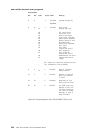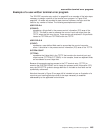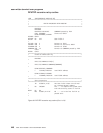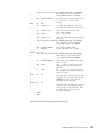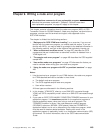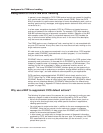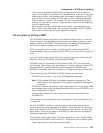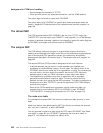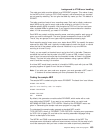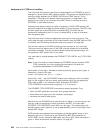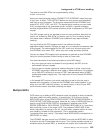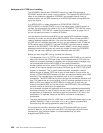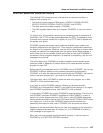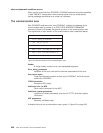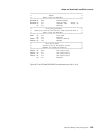v Status changes (for example, of TCTTE)
v Clean-up work (cancel any associated transaction, end the VTAM session).
The action flags can be set or reset within DFHZNEP.
The action flags set by DFHZNAC for specific error codes and sense codes are
listed in “Appendix B. Default actions of the node abnormal condition program” on
page 789.
The default NEP
The CICS-supplied default NEP, DFHZNEP, sets the “print TCTTE” action flag
(TWAOTCTE in the user option byte TWAOPT1—see page 461) if a VTAM storage
problem is detected; otherwise it performs no processing, leaves the action flags set
by DFHZNAC unchanged, and returns control to DFHZNAC.
The sample NEP
The CICS sample node error program is a generalized program structure for
handling errors detected from logical units. None of its components is generated as
part of the standard CICS generation process, but instead may be optionally
generated as described in this section and in “The sample node error program” on
page 465.
The sample NEP that CICS provides is designed with two main features:
v It sample assumes that you want to invoke separate user-supplied error
processors to handle different “groups” of error types. You specify which of the
DFHZNAC internal error codes are to be regarded as a “group” for processing by
any one routine, and then supply the code for that routine. CICS has some
standard cases to help you. More information is given about them below.
v The supplied error processors may work in association with a separately
generated module called a node error table. This can be used to build up
statistics for each error group that the NEP processes. This table is analogous to
the terminal error table, DFHTEPT, used by the equivalent CICS-TCAM sample
terminal error program.
Some of the CICS-supplied error processors use the node error table—for
example, that for errors affecting 3270 LUs (GROUP=1) (see “DFHSNEP
TYPE=DEF3270—including error processors for 3270 LUs” on page 470).
The node error table
To understand the sample NEP, first look at the node error table structure in more
detail.
Node error table is often abbreviated to NET. You should not confuse this acronym
with “net” (as in “network”), or with a NETNAME.
You can generate a node error table using the CICS macro DFHSNET. See “Node
error table” on page 467 and “DFHSNET—generating the node error table” on
page 473. You choose how complex this table is to be.
background to VTAM error handling
452
CICS TS for OS/390: CICS Customization Guide



